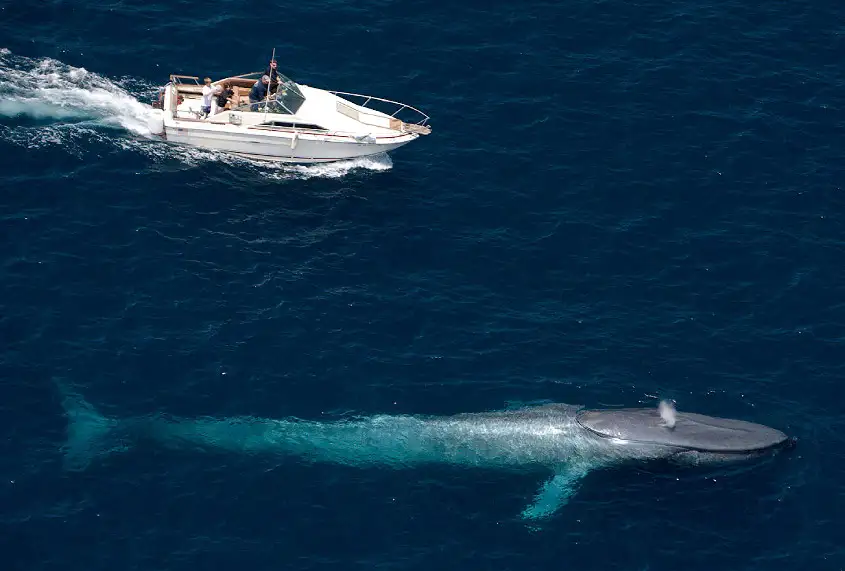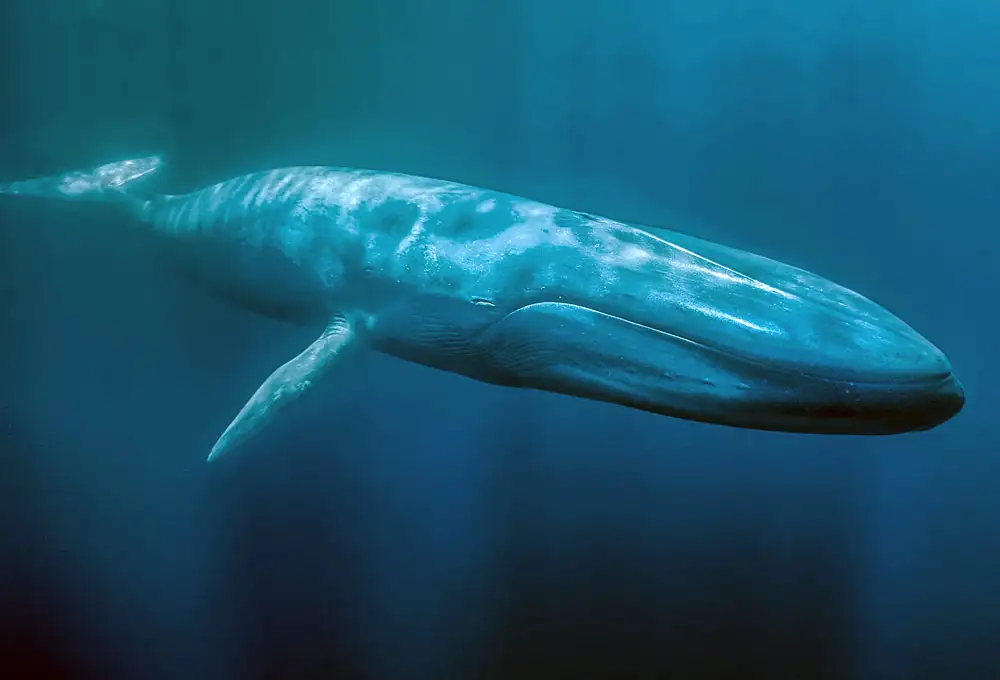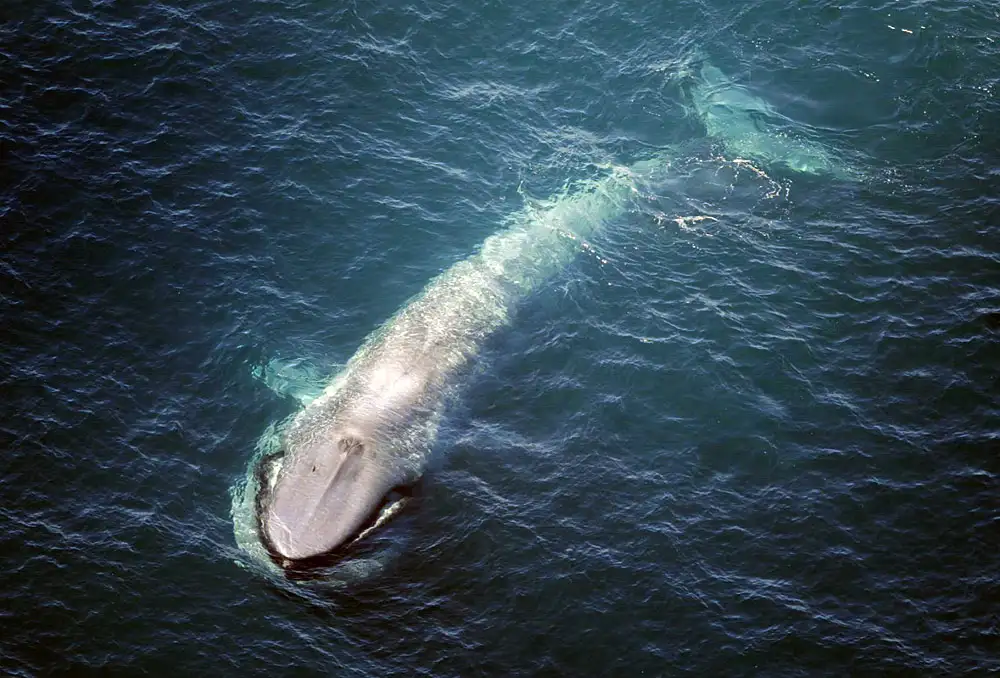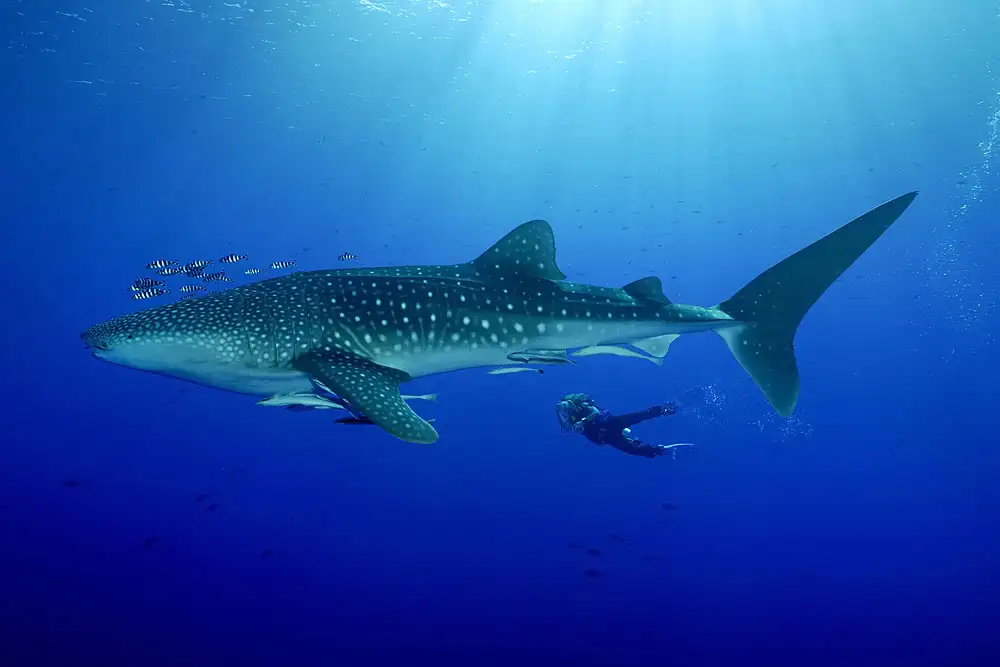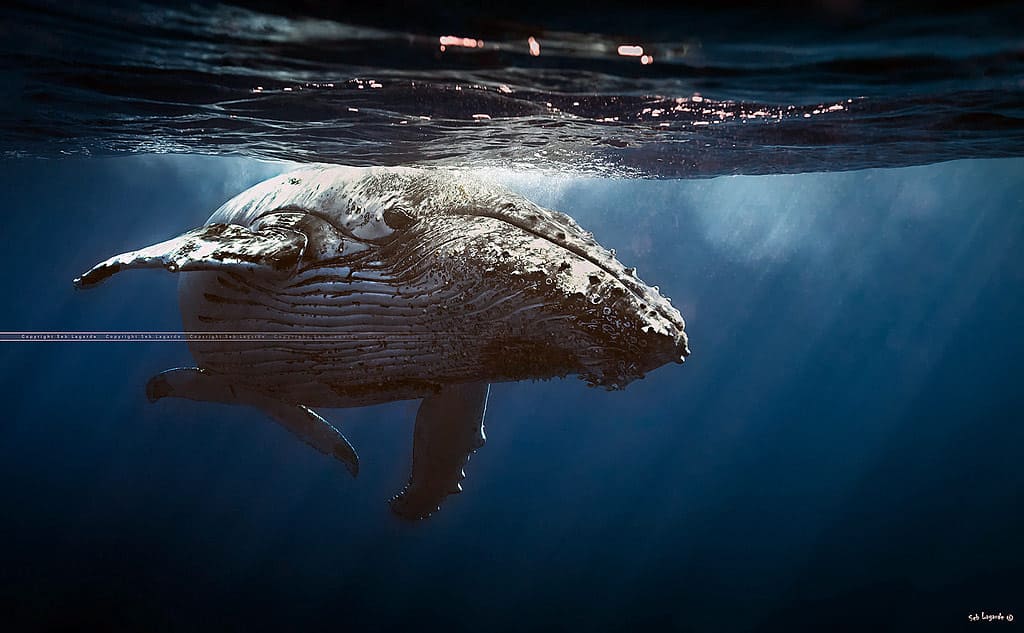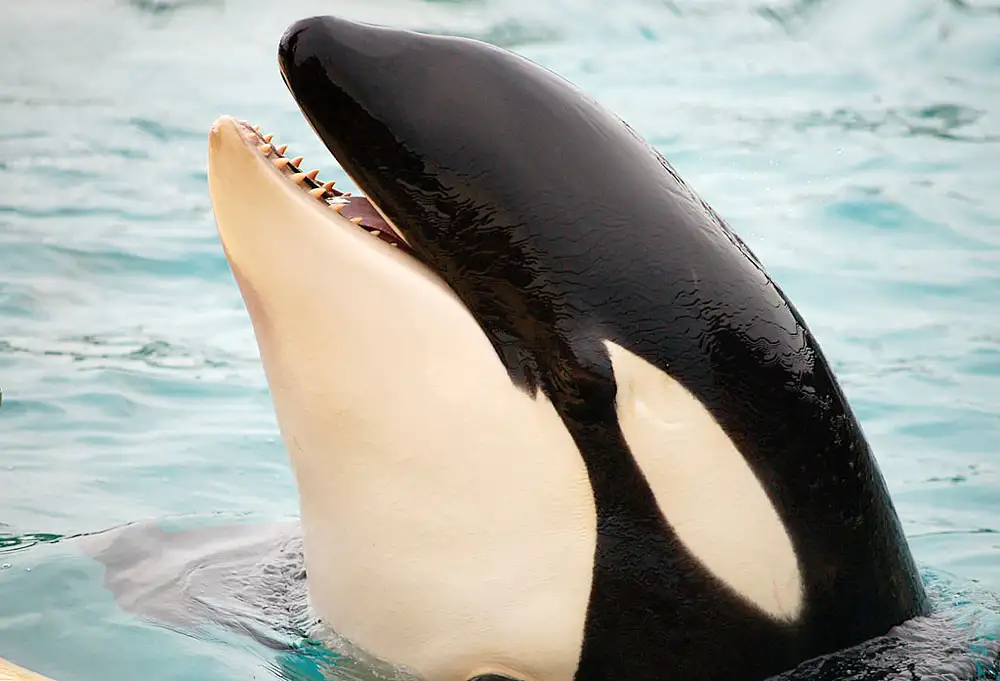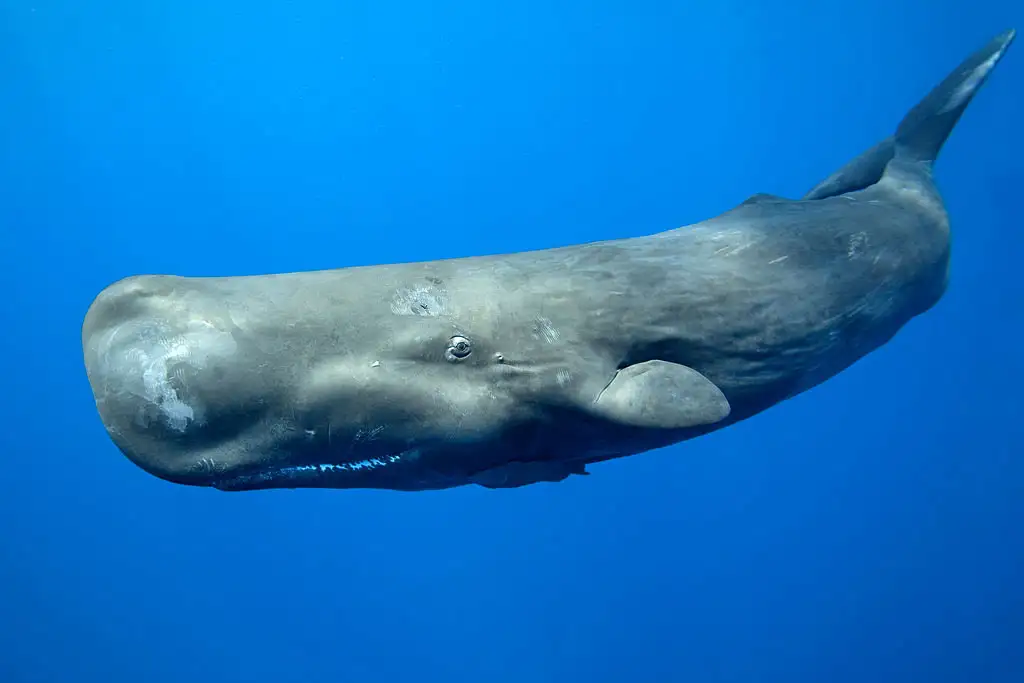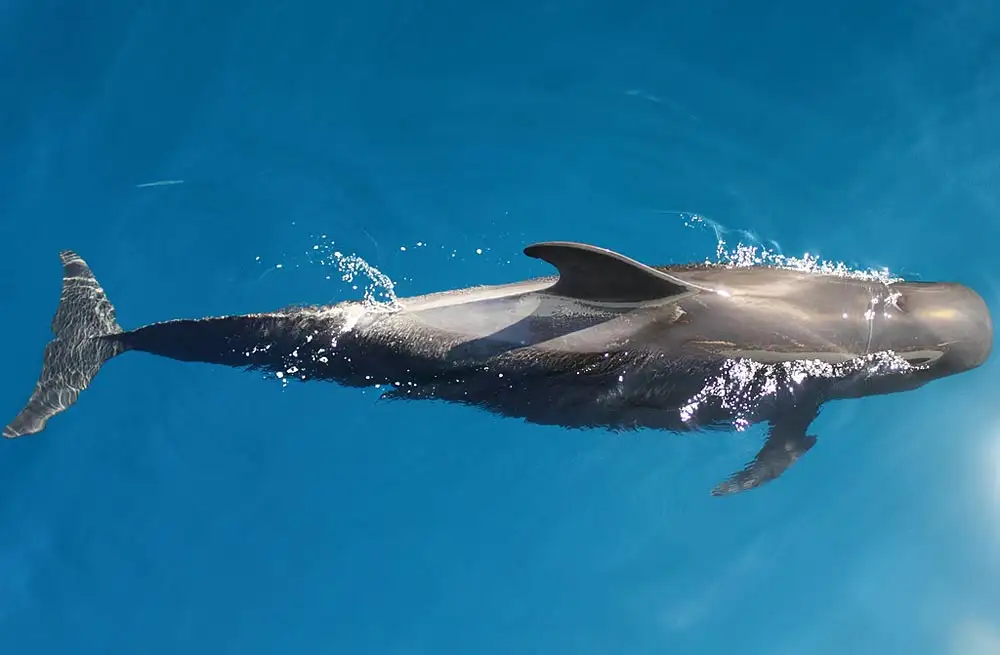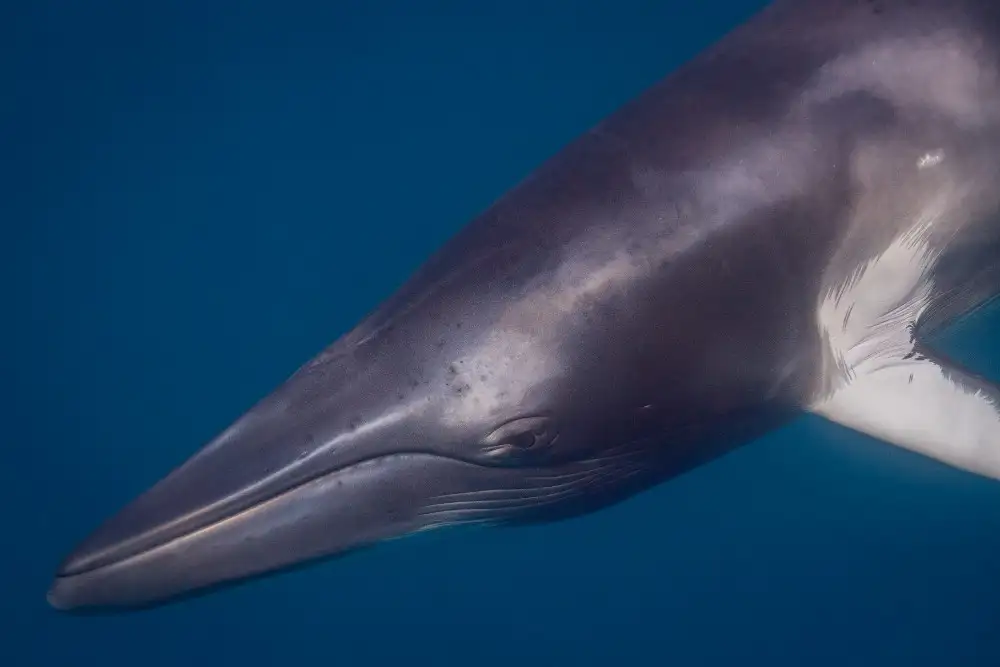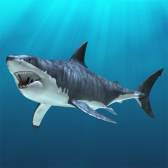Blue Whale
IUCN
ENBasic Information
Scientific classification
- name:Blue Whale
- Scientific Name:Balaenoptera musculus
- Outline:Giant Fish
- Family:Balaenopteridae Balaenoptera
Vital signs
- length:24–30 m (larger extremes recorded)
- Weight:c. 80–150 t
- lifetime:c. 70–90 years
Feature
Largest animal; infrasonic calls; long‑range migrations; lunge feeding with baleen filtration.
Distribution and Habitat
Productive upwelling and polar‑front systems; high‑latitude feeding and lower‑latitude breeding grounds.
Appearance
Blue‑grey mottled; very small far‑back dorsal fin; 60–90 ventral grooves; tall vertical blow.
Details
Blue whale (Balaenoptera musculus) is the largest animal ever known. A rorqual in the familyBalaenopteridae, it feeds primarily on krill via high‑speed lunge feeding with expandable ventral pleats and baleen plates for filtration. Calls extend into the infrasonic range, propagating across ocean basins. IUCN: Endangered (EN).
Basics
Scientific name: Balaenoptera musculus
Length: typically 24–30 m (larger extremes recorded)
Mass: about 80–150 t (seasonal/individual variation)
Ecology & Behaviour
Targets dense krill swarms in productive systems (upwellings, polar fronts). Summers at high‑latitude feeding grounds; winters at mid‑ to low‑latitude breeding areas. Usually solitary or in small parties; looser aggregations form at rich prey patches. Dives commonly 10–20 min; much longer dives occur. Blow is tall and vertical, visible from afar.
Identification
Blue‑grey mottled “marbled” body; very small dorsal fin set far back; long, streamlined body; 60–90 ventral grooves. When surfacing, the long back “rolls” with a small dorsal fin appearing late; blow ~9–12 m and vertical.
Subspecies & Range
B. m. musculus (Northern Hemisphere blue whale): North Atlantic & North Pacific.
B. m. intermedia (Antarctic blue whale): Southern Ocean, typically larger.
B. m. brevicauda (pygmy blue whale): Indian Ocean–W Pacific, smaller with subtly different proportions.
Threats & Conservation
Historic industrial whaling left severely reduced populations.
Ship strikes & entanglement in busy shipping corridors and fixed‑gear fisheries.
Noise & climate change affecting communication and krill distribution.
Measures: vessel speed/routing management in hotspots, quieter‑ship initiatives, gear modifications/ropeless trials, anddynamic spatial protection guided by real‑time prey/habitat monitoring.
FAQ
Q1. What do blue whales eat? Primarily krill filtered after high‑speed lunges.
Q2. How deep/long are dives? Operational dives tens to hundreds of metres, often 10–20 min; longer dives occur.
Q3. How to tell from fin whale? Blue whales are bluer with a smaller, farther‑back dorsal fin and a very tall vertical blow;
fin whales show asymmetric jaw colour.
Q4. Grouping? Mostly solitary or small groups; aggregations at dense prey patches.

